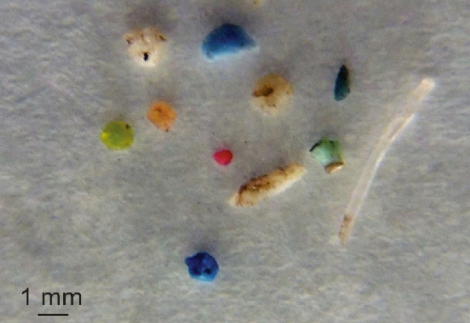Do you know the barnacles? We will have seen them many times at the seaside. They stick to the rocks, often appearing to be part of them. Their hard and sometimes sharp shells end up taking on the same appearance as the rock on which they rest. Good. These tiny crustaceans are ingesting ever greater quantities of plastic
He is about to end up run over, his mother saves him
You know i magnet? We will have seen them many times at the seaside. They stick to the rocks, often appearing to be part of them. Their hard and sometimes sharp shells end up taking on same appearance as the rock on which they rest. Good. Such tiny crustaceans are ingesting ever greater quantities of plastic.
Also known as dog tooth, the barnacle nourishes itself thanks to particular bristles that collect the food. These small creatures cling to a rock but also to the docks of the ports or to the ships, waiting for the food transported by the waters to reach them. For this reason, they settle in places where the current can hit them. What is reputed edible, comes to the mouth, unlike the rest that is thrown. Normally, their food consists of larvae (also of other crustaceans), plankton, bacteria, being able to feed only on what does not exceed 1 mm in size.
Unfortunately, even plastic can reach that size, ending up being the unhealthy meal of these silent sea creatures. Miriam Goldstein of the Scripps Institution of Oceanography has found that this problem is far more serious than previously estimated.
By examining i gastrointestinal tracts of 385 balano-goose collected from Great Pacific Garbage Patch, scientists found microplastics in one third of them. Some crustaceans had a single piece of plastic in their stomach while others had swallowed up to 30 fragments. The image below shows what is extracted from these creatures, killed by plastic.

“It is very impressive to know that these cirripedi they eat a lot of plastic. They are really hardy, able to live on any floating surface, so they are very common in areas with a lot of plastic ”explains Goldstein on his blog Deepseanews. They live right on the surface, where tiny pieces of floating plastic end up in their mouths.
Plastic comes unfortunately ingested by many animals, from birds to turtles and fish. "We have now documented the ingestion of plastic in a very common invertebrate," said Goldstein, probably the living being whose specimens are the most numerous in the animal world. This shows that the problem goes far beyond appearances and is even more serious.
Not to mention that barnacles are eaten by some predators, including the sea snail and some crabs.
Living rocks of plastic. That's what they are becoming.
Francesca Mancuso
READ also:
- Waste at sea: in the Tyrrhenian Sea 80% is plastic
- Ocean pollution: 4 solutions to plastic islands


























